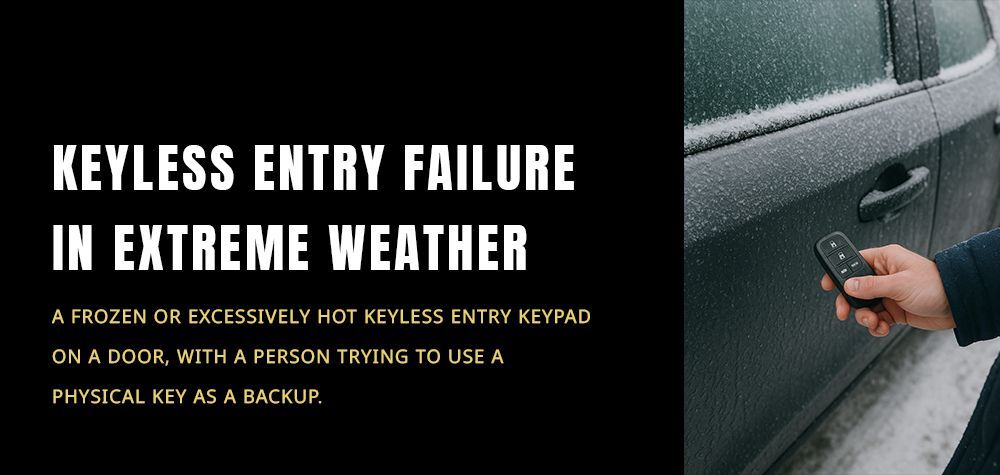What to Do When Your Car Key Breaks: A Complete Guide
Imagine rushing to an important meeting or getting ready for a long drive when suddenly, your car key snaps in half. It’s a frustrating situation, but not an uncommon one. Car keys can break due to wear and tear, accidental force, or internal structural weaknesses. The good news is that there are solutions to get you back on the road quickly. In this guide, we’ll explore why car keys break, what immediate steps you should take, and the best long-term solutions to prevent future mishaps.
5 Reasons Why Rekeying is Better Than Replacing Your Locks
Why Do Car Keys Break? Common Causes Explained
Understanding why car keys break can help you avoid future issues. Here are some of the main reasons:
1. Metal Fatigue and Wear Over Time
Repeated use of a key can lead to metal fatigue, where the structure weakens due to constant pressure and movement. Over time, even the strongest keys develop stress fractures, making them prone to snapping.
2. Using Excessive Force
Jamming a key into a lock or turning it forcefully can lead to breakage, especially if the lock mechanism is stiff or misaligned. This is particularly common in older cars where the ignition or door lock may require more effort to turn.
3. Poor Key Duplication
If you’ve ever had a key duplicated at a low-quality service, you may have received a weak or improperly cut copy. Poorly cut keys don’t fit perfectly in the lock, leading to extra stress when turning the key.
4. Extreme Weather Conditions
Metal expands in heat and contracts in cold temperatures. If a key is subjected to extreme weather conditions, it can weaken and become more brittle over time, making it more susceptible to breaking.
5. Accidental Damage
Dropping your key, stepping on it, or bending it can weaken its internal structure. Plastic-covered transponder keys are particularly vulnerable, as the outer casing can crack, exposing the fragile metal within.
Immediate Steps to Take When Your Car Key Breaks
If your car key breaks, don’t panic. Here’s what you should do immediately to minimize damage and resolve the issue efficiently:
1. Assess the Situation
Determine if the key has snapped inside the ignition, door lock, or outside. This will influence the next steps you take. If the key is still intact but weakened, avoid using it further.
2. If the Key is Stuck Inside the Lock or Ignition
- Do Not Force It Out: Using excessive force can push the key deeper or damage the internal mechanism of the lock or ignition.
- Use Needle-Nose Pliers or Tweezers: If part of the key is sticking out, gently pull it out using pliers or tweezers.
- Apply Lubricant: A spray lubricant like WD-40 can loosen the stuck key and help extract it smoothly.
- Use a Key Extraction Tool: If available, a locksmith’s key extraction tool can be very effective in pulling out broken key fragments.
- Seek Professional Help: If the key is deeply lodged, call a locksmith to avoid causing further damage to the lock.
3. If the Key Breaks Completely in Two Pieces
- Keep Both Pieces: If your key snaps in half, don’t discard any part. A locksmith can use them to cut a new key.
- Check for Damage: Inspect the key and lock for any additional damage. If the lock is also compromised, you may need more than just a new key.
- Use a Spare Key: If you have a backup key, use it to access your car until you get a replacement.
Solutions for a Broken Car Key: Getting a Replacement
1. Contact a Professional Locksmith
A locksmith is often the fastest and most cost-effective solution. They can:
- Extract broken keys from locks.
- Cut a new key using the broken pieces as a template.
- Program transponder keys or fobs if necessary.
2. Visit Your Car Dealership
Car dealerships provide manufacturer-approved key replacements, but they tend to be more expensive and time-consuming. If your key has an advanced security chip, this might be your only option.
3. Use a Mobile Key-Cutting Service
Some locksmiths offer mobile key-cutting services that can come to your location and make a replacement on-site. This is convenient if you’re stuck somewhere without access to a locksmith shop.
4. Order an Online Replacement Key
If you have time, you can order a replacement key online using your car’s make, model, and VIN. However, keep in mind that transponder keys will still require programming.
5. Repair a Damaged Key Instead of Replacing It
For keys that have broken but are not entirely unusable, some locksmiths can repair them by soldering or using resin bonding techniques.
How to Prevent Your Car Key from Breaking in the Future
1. Get a Spare Key Before You Need One
Having a duplicate key reduces wear on your primary key and serves as an emergency backup.
2. Avoid Putting Excess Pressure on Your Key
If your key is difficult to turn, get your ignition or lock checked instead of forcing the key.
3. Store Keys Properly
Keep your keys in a protective case or pouch to prevent accidental bending or damage.
4. Keep Locks Lubricated
A stiff lock can put extra pressure on a key. Regularly lubricate locks with graphite or silicone-based lubricants.
5. Upgrade to a Keyless Entry System
If your car supports it, consider switching to a keyless entry system to eliminate the risk of key breakage entirely.
Conclusion: Don’t Let a Broken Key Ruin Your Day
A broken car key is an inconvenience, but with the right approach, you can handle the situation smoothly. Whether you extract a stuck key, get a replacement from a locksmith, or take preventative measures for the future, knowing your options ensures you’re never left stranded. Take proactive steps to care for your keys, and always have a backup plan in place. When in doubt, call a professional to avoid further complications. With these solutions, you can confidently handle a broken car key situation and get back on the road without unnecessary stress.
Call Us Any Time!







